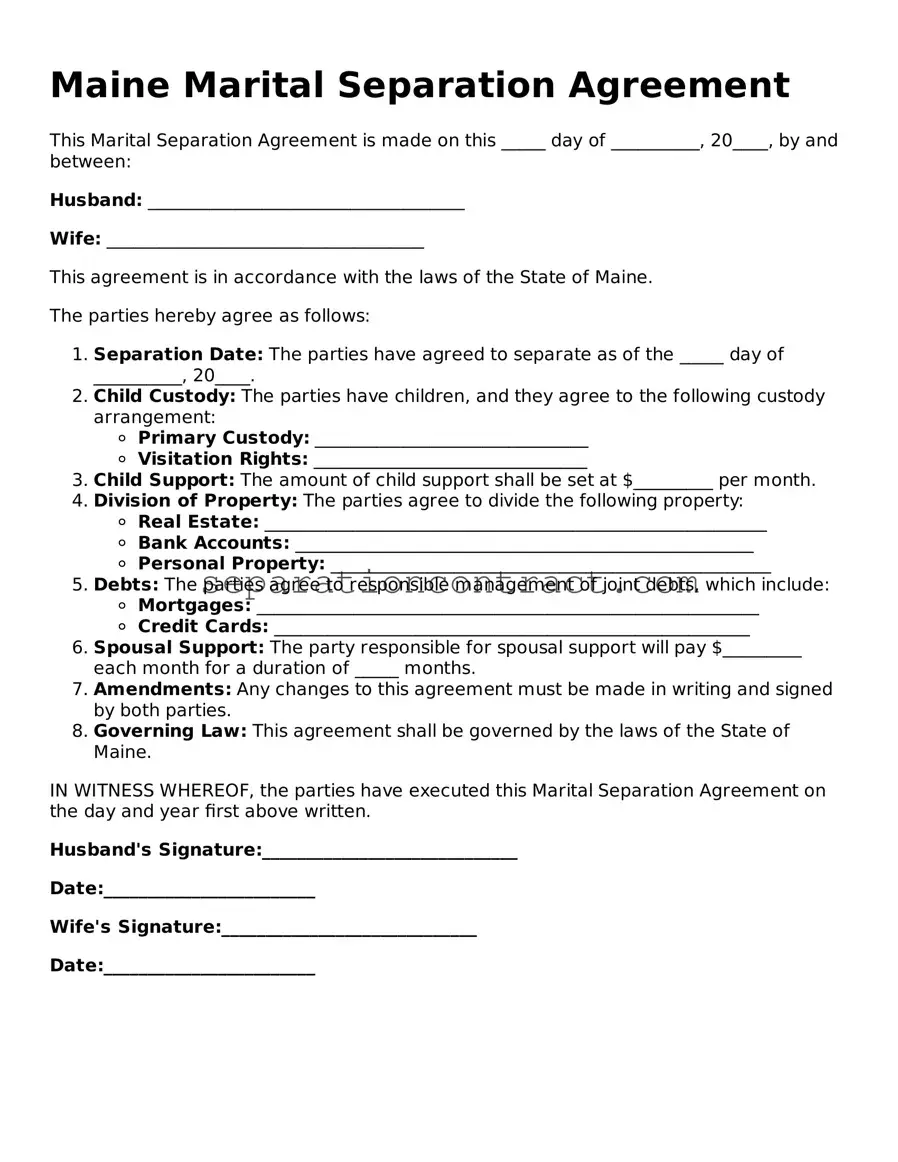Filling out the Maine Marital Separation Agreement form can be a daunting task, and mistakes can lead to delays or complications in the separation process. One common error is failing to provide complete information. When individuals leave out critical details about assets, debts, or personal information, it can create confusion and may result in legal issues down the line.
Another frequent mistake is not specifying the terms of child custody clearly. Parents often assume that verbal agreements will suffice, but without written documentation, misunderstandings can arise. It's essential to outline custody arrangements, visitation schedules, and decision-making responsibilities in detail to avoid future disputes.
Many people overlook the importance of addressing spousal support. Some individuals may think that support won't be an issue, but it's crucial to discuss and document any financial support that may be necessary during the separation. Failing to include this information can lead to unexpected financial challenges later.
Inaccurate valuations of property and assets can also be problematic. When individuals underestimate or overestimate the value of their belongings, it can lead to unfair distributions. It's advisable to conduct thorough assessments of all assets, including real estate, vehicles, and personal property, to ensure a fair agreement.
Another mistake is neglecting to consider tax implications. People often forget that property divisions and spousal support can have tax consequences. Consulting with a tax professional can help clarify these issues, ensuring that individuals are not caught off guard when tax season arrives.
Additionally, some individuals fail to review the agreement thoroughly before signing. Rushing through the process can lead to overlooked details or misunderstandings. Taking the time to read through the entire document and ensuring that all terms are clear and agreeable is vital.
Not seeking legal advice is a mistake many make. While it might seem tempting to navigate the process alone, having a legal professional review the agreement can provide valuable insights and help avoid potential pitfalls. Legal advice can be especially beneficial for those with complex financial situations or children involved.
Another common error is not considering the future. People often focus solely on the present circumstances without thinking about how their agreement may need to adapt over time. Including provisions for future changes, such as job relocations or changes in financial status, can help prevent conflicts later on.
Lastly, individuals sometimes forget to include a dispute resolution clause. This clause outlines how disputes will be handled if they arise in the future. Without this provision, couples may find themselves back in court over disagreements that could have been resolved through mediation or arbitration.
By being aware of these common mistakes and taking the time to address them, individuals can create a more effective and fair Maine Marital Separation Agreement. This careful approach can lead to a smoother transition during a challenging time.
